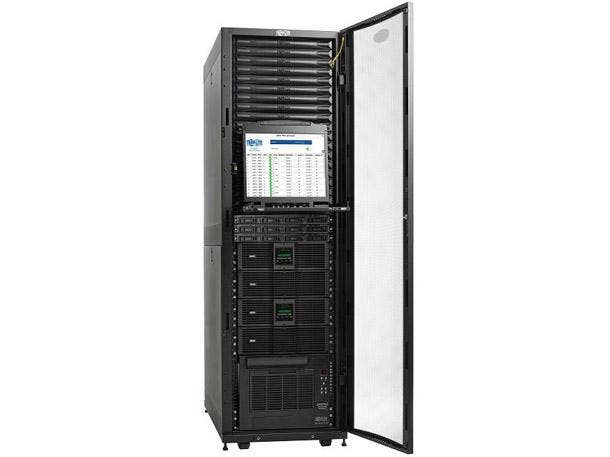Tripp Lite Enters Micro Data Center Business With EdgeReady Line
Tripp Lite is stocking 40 different SKUs of its EdgeReady micro data centers that can be configured quickly and shipped with five days of order, with a focus on bringing a complete data center to edge locations.

Data center infrastructure manufacturer Tripp Lite has entered the SKU'd micro data center business after years of custom bundling its rack, power, and management equipment for clients and their channel partners.
Tripp Lite's EdgeReady is the Chicago-based company's entry into the micro data center market, a market defined by containerized or rack-based modules that tie the rack enclosure, UPS, network management card, power distribution unit (PDU), and sensors and management software into a single SKU.
For Tripp Lite, that means having 40 different configurations ready for configuration with a three-day to five-day order to shipping time, said Tony Locker vice president of product management for enterprise solutions for the vendor.
[Related: Eaton’s Del Misenheimer: ‘We’re Not Doing IoT. We’re Going To Enable IoT’]
"We have 40 SKUs in stock in Chicago so customers don't have to order five or ten different items," Locker told CRN. "Customers just purchase the SKU they need, and we ship in a couple days."
Tripp Like provides all the components that go into the EdgeReady micro data centers, including the rack, the UPS, and the PDU, Locker said.
"We work with customers on what else we put inside, including the cooling, the cabling, and the KVM," he said. "It can be a wall-mount rack, a floor rack, or other form factor. We just leave the IT equipment out."
While initial customers of the EdgeReady micro data centers tended to be in the financial business, Locker said Tripp Lite expects edge computing to be a big potential market.
For edge computing, there are a couple of primary criteria, including places where a lot of data is being processed locally and needs to be moved quickly, Locker said. "Retail, enterprises, manufacturing, IoT, financial institutions, anywhere customers have a central data center with remote sites, is a good place for a micro data center," he said.
Locker said Tripp Lite also sees such locations categorized by power requirements, with small units requiring 5 to 20 kWh and larger units requiring up to 100 kWh. If a deployment requires over 100 kWh, Locker said a containerized data center would probably be a more viable offering.
"We believe the edge is upon us," he said. "We believe in the concept."
Jason Richards, manager of power and cooling at SHI International, a Somerset, N.J.-based solution provider and Tripp Lite channel partner, said he likes Tripp Lite's approach to the micro data center business.
"This is more of a complete solution, with power, racks, and cooling all in one," Richards told CRN. "The customer just puts in their own hyper-converged infrastructure solution, and they're ready to go."
Richards said hyper-converged infrastructure is ideal for the EdgeReady micro data centers, but customers could also piece together their own infrastructure.
The edge is the primary market for micro data centers, Richards said.
"If a client has multiple branches, each will need its own UPS, storage enclosure, switching," he said. "We can set up a micro data center with all the requirements in the backroom of a grocery store or coffee shop. It's also great for remote offices without on-site IT managers."
Tripp Lite is offering a one-stop shop for such deployments," Richards said. "Everything's integrated and then shipped," he said. "Customers can often install it themselves without the need from someone from IT to go out."
For clients looking for a complete package, SHI can also install the hyper-converged infrastructure or the server, storage, and networking components into the EdgeReady and just roll it in, Richards said.